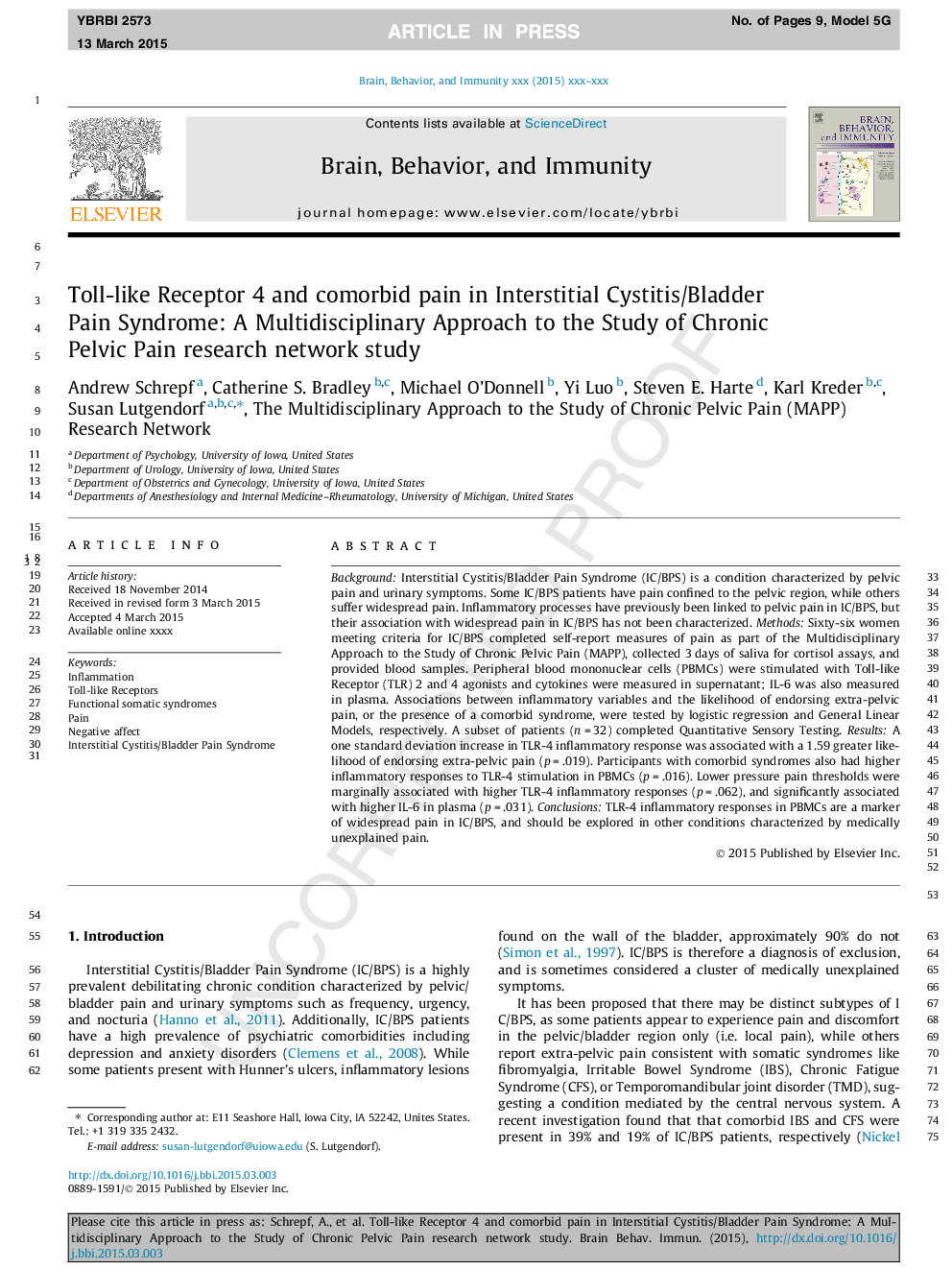| Article ID | Journal | Published Year | Pages | File Type |
|---|---|---|---|---|
| 7280743 | Brain, Behavior, and Immunity | 2015 | 9 Pages |
Abstract
Background: Interstitial Cystitis/Bladder Pain Syndrome (IC/BPS) is a condition characterized by pelvic pain and urinary symptoms. Some IC/BPS patients have pain confined to the pelvic region, while others suffer widespread pain. Inflammatory processes have previously been linked to pelvic pain in IC/BPS, but their association with widespread pain in IC/BPS has not been characterized. Methods: Sixty-six women meeting criteria for IC/BPS completed self-report measures of pain as part of the Multidisciplinary Approach to the Study of Chronic Pelvic Pain (MAPP), collected 3 days of saliva for cortisol assays, and provided blood samples. Peripheral blood mononuclear cells (PBMCs) were stimulated with Toll-like Receptor (TLR) 2 and 4 agonists and cytokines were measured in supernatant; IL-6 was also measured in plasma. Associations between inflammatory variables and the likelihood of endorsing extra-pelvic pain, or the presence of a comorbid syndrome, were tested by logistic regression and General Linear Models, respectively. A subset of patients (n = 32) completed Quantitative Sensory Testing. Results: A one standard deviation increase in TLR-4 inflammatory response was associated with a 1.59 greater likelihood of endorsing extra-pelvic pain (p = .019). Participants with comorbid syndromes also had higher inflammatory responses to TLR-4 stimulation in PBMCs (p = .016). Lower pressure pain thresholds were marginally associated with higher TLR-4 inflammatory responses (p = .062), and significantly associated with higher IL-6 in plasma (p = .031). Conclusions: TLR-4 inflammatory responses in PBMCs are a marker of widespread pain in IC/BPS, and should be explored in other conditions characterized by medically unexplained pain.
Keywords
Related Topics
Life Sciences
Immunology and Microbiology
Immunology
Authors
Andrew Schrepf, Catherine S. Bradley, Michael O'Donnell, Yi Luo, Steven E. Harte, Karl Kreder, Susan Lutgendorf,
